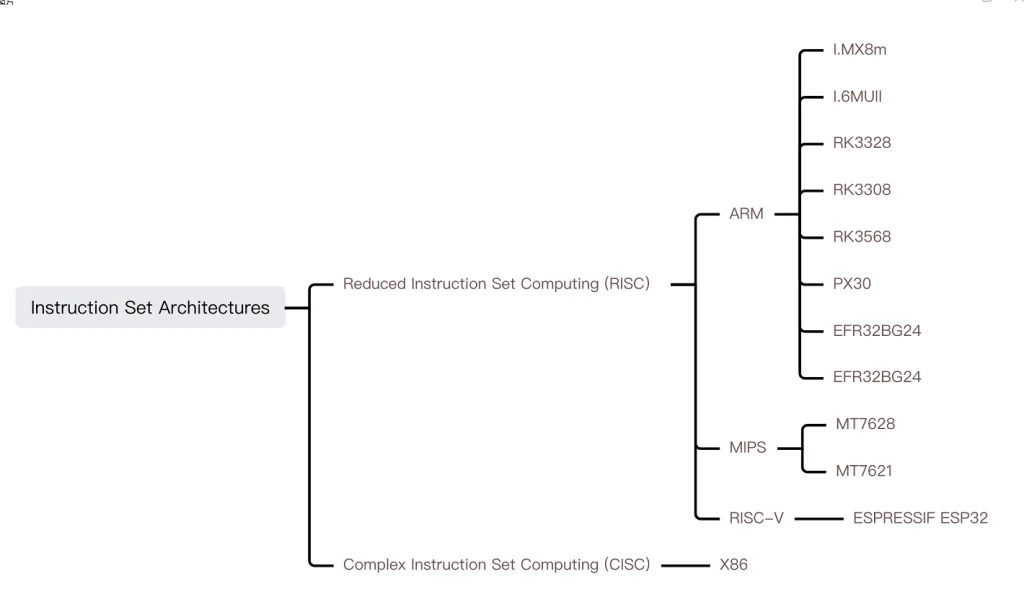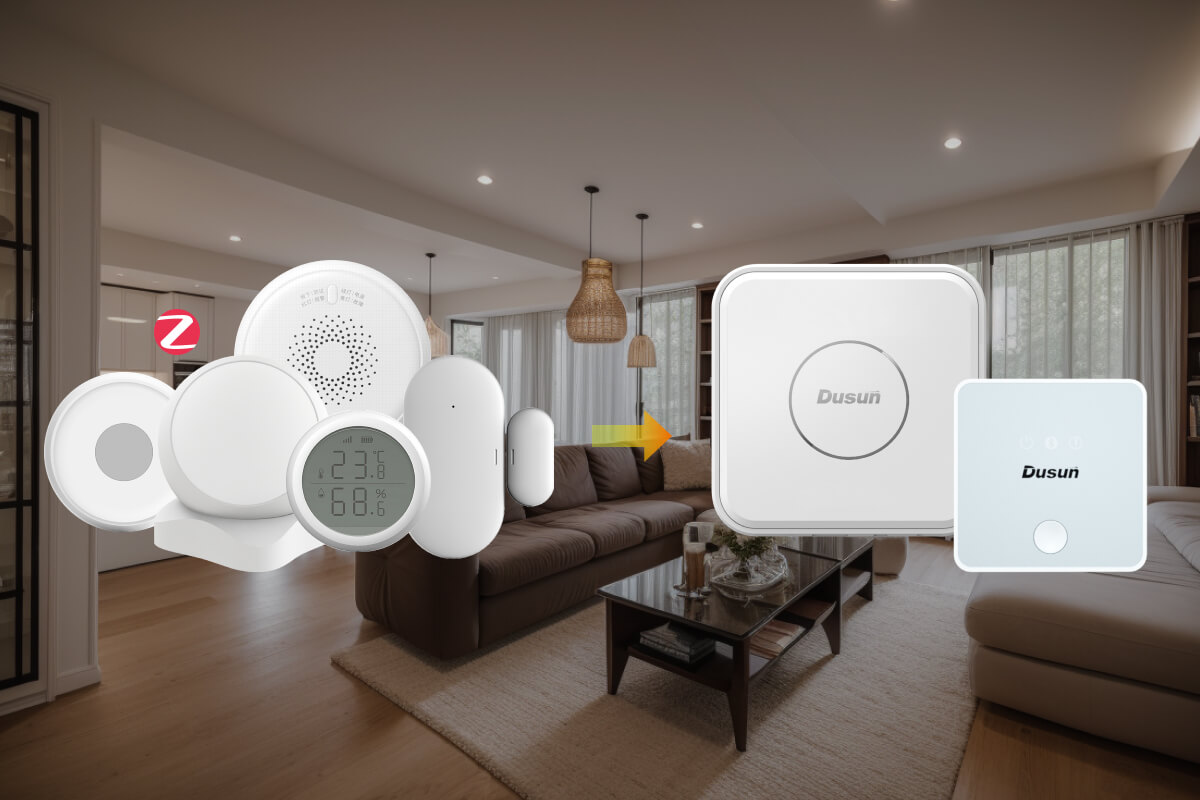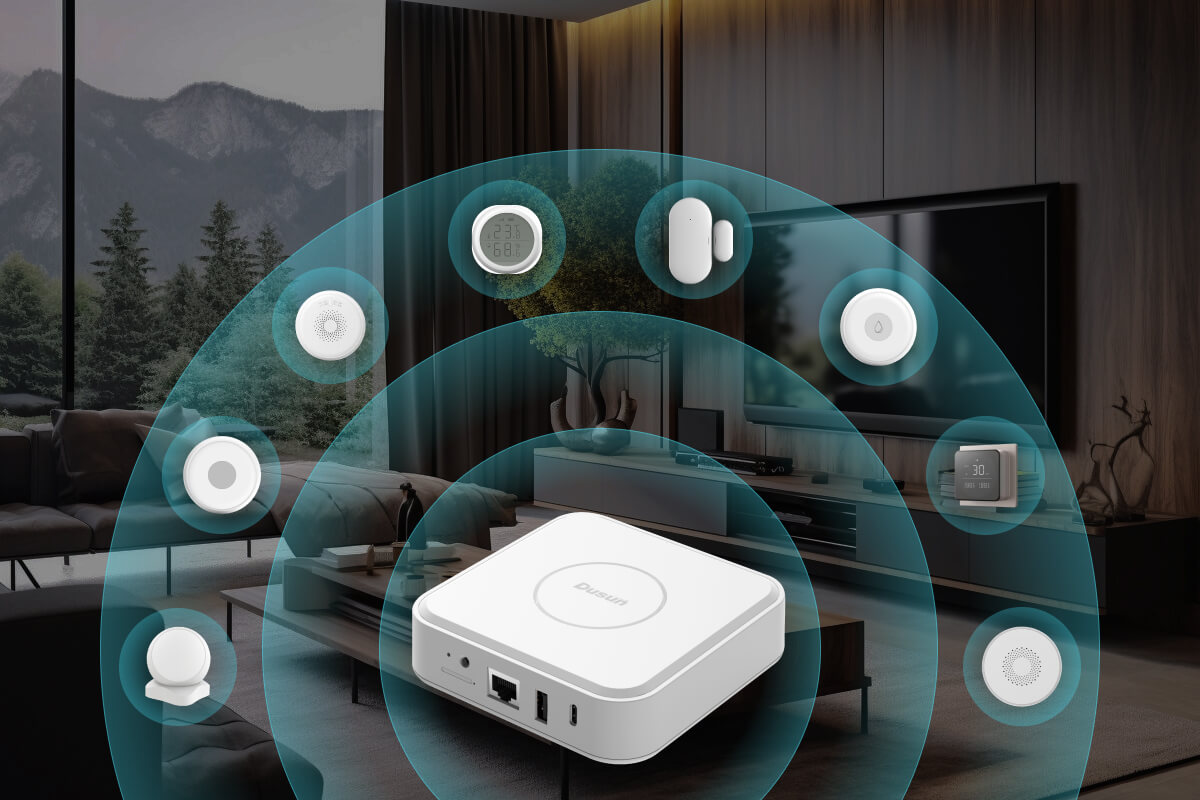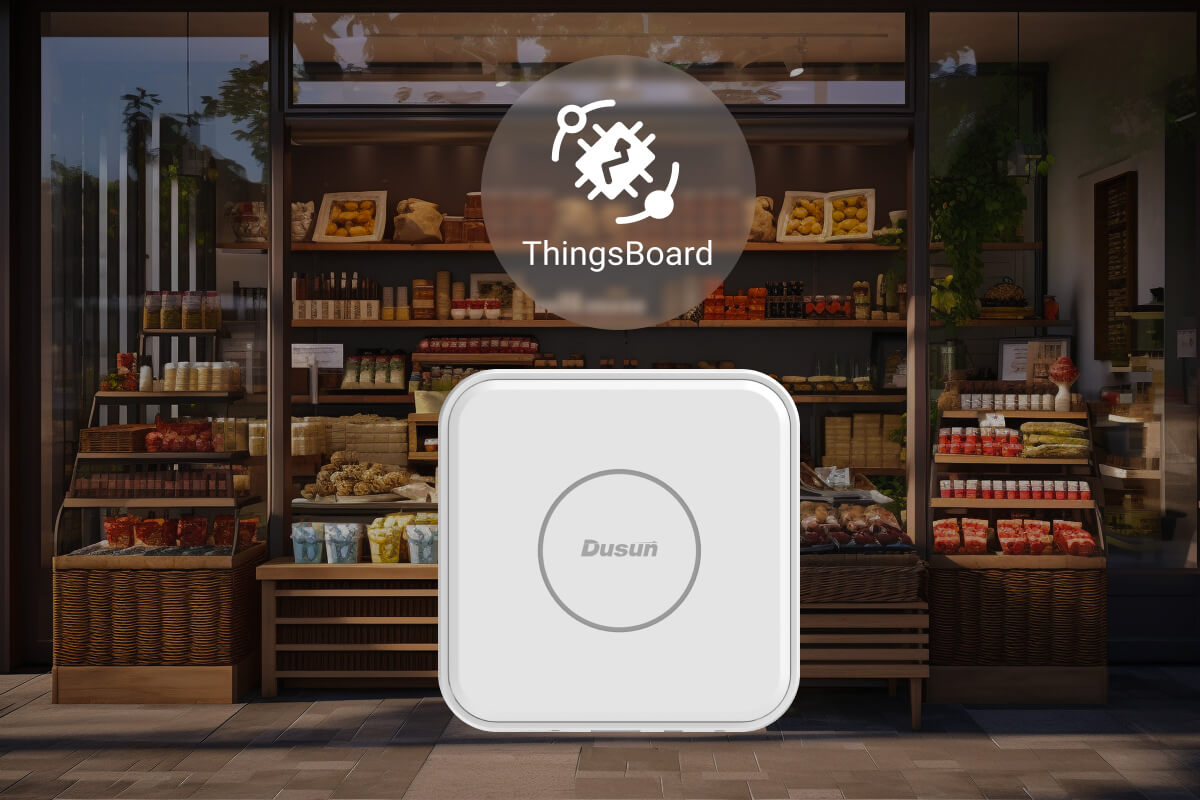Hardware platforms such as ARM, X86, MIPS, and NPU are important in IoT gateway because they provide the necessary processing power, energy efficiency, and compatibility required for IoT gateways to function effectively. These hardware platforms enable IoT gateways to collect, process, and transmit data from various sensors and devices in real time, making it possible for businesses and organizations to make informed decisions quickly and efficiently.
IoT gateway connects various IoT devices and sensors to the cloud or the internet. These devices and sensors generate large amounts of data that need to be collected, processed, and transmitted to the cloud or other devices. IoT gateways act as a bridge between these devices and the cloud, enabling communication and data transfer between them.

In this article, we will introduce commonly seen types of hardware platforms to IoT gateway developers, and how to choose it.
MIPS Architecture
Overview of MIPS Architecture
MIPS architecture ( Microprocessor without Interlocked Piped Stages, also the abbreviation of Millions of Instructions Per Second) is a processor architecture that adopts a reduced instruction set (RISC), which appeared in 1981 and was developed and authorized by MIPS Technology Corporation.
The MIPS architecture is based on a fixed-length regularly encoded instruction set and employs a load/store data model. This architecture has been modified to support optimized execution of high-level languages. Its arithmetic and logical operations take the form of three operands, allowing the compiler to optimize complex expressions.
Today, chips based on MIPS architecture are widely used in many electronic products, network equipment, personal entertainment devices and commercial devices. The earliest MIPS architecture was 32-bit, and the latest version has become 64-bit.
Applications of MIPS within an IoT Gateway
MIPS architecture is a popular architecture used in embedded systems of IoT gateways, due to its high performance, low power consumption, low cost, and its scalability. It can facilitate low latency and high-speed processing of data for edge computing in IoT gateways, which is critical in smart cities, transportation, and surveillance applications. Additionally, it can enable high-performance and energy-efficient computing in wearable medical devices, including smartwatches, fitness trackers, and remote patient monitoring devices.
Mediatek MT7628 and MT7621 processor is MIPS compatible. If you want to develop IoT Devices based on MIPS Architecture, DSOM-080M MediaTek MT7628 System on Module and DSOM-090M MediaTek MT7621 System on Module are suitable for you.
ARM Architecture
Overview of ARM Architecture
ARM is the abbreviation of Advanced Reduced Instruction Set (Advanced RISC Machine). It is a 32-bit Reduced Instruction Set (RISC) architecture, but it is also equipped with a 16-bit instruction set. Generally speaking, ARM processor saves up to 35% compared to the equivalent 32-bit code. But it can retain all the advantages of 32-bit systems. ARM is widely used in many embedded system designs. Due to the characteristics of energy saving, the ARM processor is very suitable for the field of mobile communication, in line with its main design goal of low power consumption.
Today, the ARM family accounts for 75% of all 32-bit embedded processors, making it one of the most 32-bit architectures in the world. ARM processors can be found in many consumer electronics products, from portable devices to computer peripherals and even military installations such as on-board computers for missiles.
Small size, low power consumption, low cost, high performance are the most important reasons why ARM is widely used in embedded systems:
- Support Thumb (16-bit)/ARM (32-bit) dual instruction set, which is well compatible with 8-bit/16-bit devices;
- A large number of registers are used, and the instruction execution speed is faster;
- Most data operations are done in registers;
- The addressing mode is flexible and simple, and the execution efficiency is high;
- Command length is fixed.
- Load_store structure: in RISC, all calculations are required to be done in registers. The communication between registers and memory is done by separate instructions. In CSIC, the CPU can directly operate on the memory.
Applications of ARM Architecture within an IoT Gateway
ARM architecture is popular for its scalability, energy efficiency, and reduced instruction set computing (RISC) architecture. It is a versatile choice for a wide range of devices, from low-power embedded systems to high-performance computing. It is widely adopted and has a large ecosystem of software and tools available for IoT gateway developers.
Dusun Offers System on Modules, motherboards and IoT gateways based on several Rochchip and NXP SoCs using Arm® CPU.
Explore: IoT gateway development
Smart Apartment/Home Devices
ARM-based IoT gateways can connect and manage various smart home devices, such as thermostats, security cameras, and voice assistants. The low power consumption of ARM architecture is ideal for these devices, which require constant communication and operation.
Explore: smart apartment hardware solutions including smart gateways, door locks, thermostats, motion sensors, smart smoker, smart switches, smart plugs, and leakage sensors.
Industrial IoT
In the industrial IoT sector, ARM-based IoT gateways can handle data processing and communication tasks efficiently, while also being customizable to meet specific requirements. This makes them suitable for applications such as predictive maintenance, asset tracking, and quality control.
Explore: Industrial IoT Gateway
IoT Healthcare
ARM-based IoT gateways can be used in healthcare applications, such as remote patient monitoring and tracking. The low power consumption of ARM architecture is ideal for wearable devices and sensors that require continuous operation.
X86 Architecture
Overview of X86 Architecture
X86 is the computer language instruction set executed by the microprocessor, which refers to the standard number abbreviation of an Intel general-purpose computer series, and also identifies a set of general-purpose computer instruction sets. The so-called instruction set is a collection of the smallest units that the processor can perform operations, such as addition, subtraction, multiplication and division are implemented by specific instructions.
On June 8, 1978, Intel released the 8086, a new 16-bit microprocessor, and at the same time created a new era: the born of X86 architecture. The X86 instruction set was specially developed by Intel Corporation of the United States for its first 16-bit CPU (i8086). The CPU-i8088 (simplified version of i8086) in the world’s first PC launched by IBM Corporation in 1981 also uses X86 instructions. With the continuous development of CPU technology, Intel has successively developed updated i80386, i80486 until today’s Pentium 4 series. But in order to ensure that the computer can continue to run various applications developed in the past to protect and inherit rich software resources, All Intel CPUs produced still continue to use the X86 instruction set.
X86 adopts CISC (Complex Instruction Set Computer) architecture. Unlike using RISC, in a CISC processor, the instructions of the program are executed serially in sequence, and the operations in each instruction are also executed serially in sequence. The advantage of sequential execution is that the control is simple, but the utilization rate of each part of the computer is not high, and the execution speed is slow.
Applications of X86 within an IoT Gateway
When it comes to choosing a processor for your IoT gateway, X86 architecture is a popular option due to its wide availability and high performance. X86 architecture provides high performance and advanced features, making it popular for desktop and server applications.
Smart City Infrastructure
X86-based IoT gateways can connect and manage various smart city devices such as traffic lights, sensors, and security cameras. The high processing power of X86 architecture is ideal for handling large amounts of data generated by these devices.
IoT Healthcare
In the healthcare industry, X86-based IoT gateways enable remote patient monitoring, wearable devices, and medical imaging. The high processing power of X86 architecture can handle complex medical data and algorithms, improving patient care and outcomes.
Education
X86-based IoT gateways are useful in education for interactive whiteboards and classroom management systems. They seamlessly integrate with educational software and tools, enhancing the learning experience for students and teachers.
NPU (Neural Processing Unit)
Overview of NPU
As IoT devices continue to proliferate, the demand for efficient and high-performing processors is on the rise. NPU (Neural Processing Unit) architecture is a specialized type of processor that is optimized for AI (Artificial Intelligence) and machine learning applications.
Applications of NPU within an IoT Gateway
Smart Security
NPU-based IoT gateways are the best choice for security applications such as facial recognition, intrusion detection, and access control. These applications can enhance security and safety for homeowners, businesses, and communities.
Intelligent Transportation
NPU-based IoT gateways provide intelligent transportation applications such as traffic monitoring, predictive maintenance, and autonomous vehicles. These applications can improve safety, efficiency, and sustainability for commuters and society.
Personal Healthcare
NPU-based IoT gateways find their applications in healthcare applications such as remote patient monitoring, medication management, and telemedicine. These applications can improve patient outcomes and reduce healthcare costs for individuals and providers.
RISC vs CISC
CISC: Complex Instruction Set Processor
CISC focuses on the functionality of hardware execution instructions, the hardware structure of CISC instructions and processors is complex. The complex instruction set (CISC) has a large number of instructions and is complex, and the length of each instruction is different. The execution of instructions is flexible. A single instruction can handle a relatively rich work content, but the problem is that more flexibility results in poor utilization rate of processor resources. Just like a 5-athlon athlete can run and jump, but he has no advantage compared with a specialized runner.
RISC: Reduced Instruction Set Processor
The reduced instruction set (RISC) processor is what we call a specialized player. RISC has a simple structure, and selects simple instructions with high frequency of use. The instruction length is fixed, and most of them are single-cycle instructions. The micro instruction set is relatively streamlined and the action is single. Therefore, the running time of a single microinstruction is relatively short. To complete relatively complex operations, the number of microinstructions that need to be run increases.
RISC has great advantages in power consumption, volume, price, etc. RISC is widely used in the embedded field.
Choose the Best Hardware Platform for Your IoT Gateway
MIPS, ARM, x86, and NPU are the popular hardware platforms used in IoT gateway development. They have their strengths and weaknesses. The choice of a hardware platform depends on the specific requirements of the IoT application. If you have read through this section, you have ample required knowledge to understand the crucial points to consider while choosing the right platform for your IoT gateway. Here I will help you to choose the right platform for your application.
For instance, MIPS is known for its efficiency and low power consumption, making it an ideal platform for low-power IoT devices such as smart home appliances. ARM is popular for its low power consumption and high performance, making it a suitable platform for a wide range of IoT applications. X86 is powerful and can handle complex tasks and applications, making it suitable for IoT gateways that require high performance, such as edge computing and AI applications. NPU, on the other hand, is a specialized platform designed to handle AI and machine learning tasks, making it ideal for IoT gateways that require real-time data processing and decision-making capabilities.
What to Consider When Choose a Hardware Platform for Your IoT Gateway?
While building an IoT gateway, choosing the right hardware platform is essential for optimal performance and functionality. The followings are the key factors to consider while selecting the IoT hardware platform.
Processing Power
Choose a hardware platform that can handle complex workloads efficiently.
Energy Efficiency
Look for a hardware platform that balances performance with energy consumption to extend battery life and reduce operating costs.
Connectivity
Ensure the hardware platform supports several communication protocols that integrate with your existing IoT ecosystem.
Explore: Dusun Pi IoT gateway featuring modular design to faciliate optimal configuration for a wide spectrum of IoT projects.
Security
Choose a hardware platform with built-in security features and support secure boot and encryption to protect sensitive data.
Which Hardware Platform is the Best Fit for Your Specific IoT Use Case?
The key to selecting the best hardware platform for an IoT gateway is to identify the specific needs and requirements of the IoT projectS. It includes understanding the types of devices and sensors that will be connected, the amount of data that will be transmitted, and any supported protocols or standards.
After defining these needs, it’s important to research available platforms to find one that aligns with the project requirements. Additionally, seeking advice from IoT gateway supplier or consultants having experience in the IoT space can be a valuable resource for making informed decisions. Taking a systematic approach and working with experts can help ensure that the chosen platform enables the development of a robust and effective IoT gateway.
Key Takeaways
Determining the ideal hardware platform for your IoT gateway will depend on several considerations, such as your particular use case, financial resources, desired performance, and technical knowledge. It’s crucial to conduct thorough research and comprehend the advantages of each platform before concluding.
The best hardware platform for your IoT gateway will depend on your specific requirements and budget. ARM or x86-based platforms are a good choice due to their versatility and performance for most IoT applications. However, if your application requires real-time processing of large amounts of sensor data or complex AI computations, an NPU-based platform may be the best choice.
















